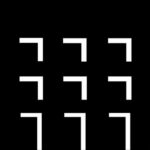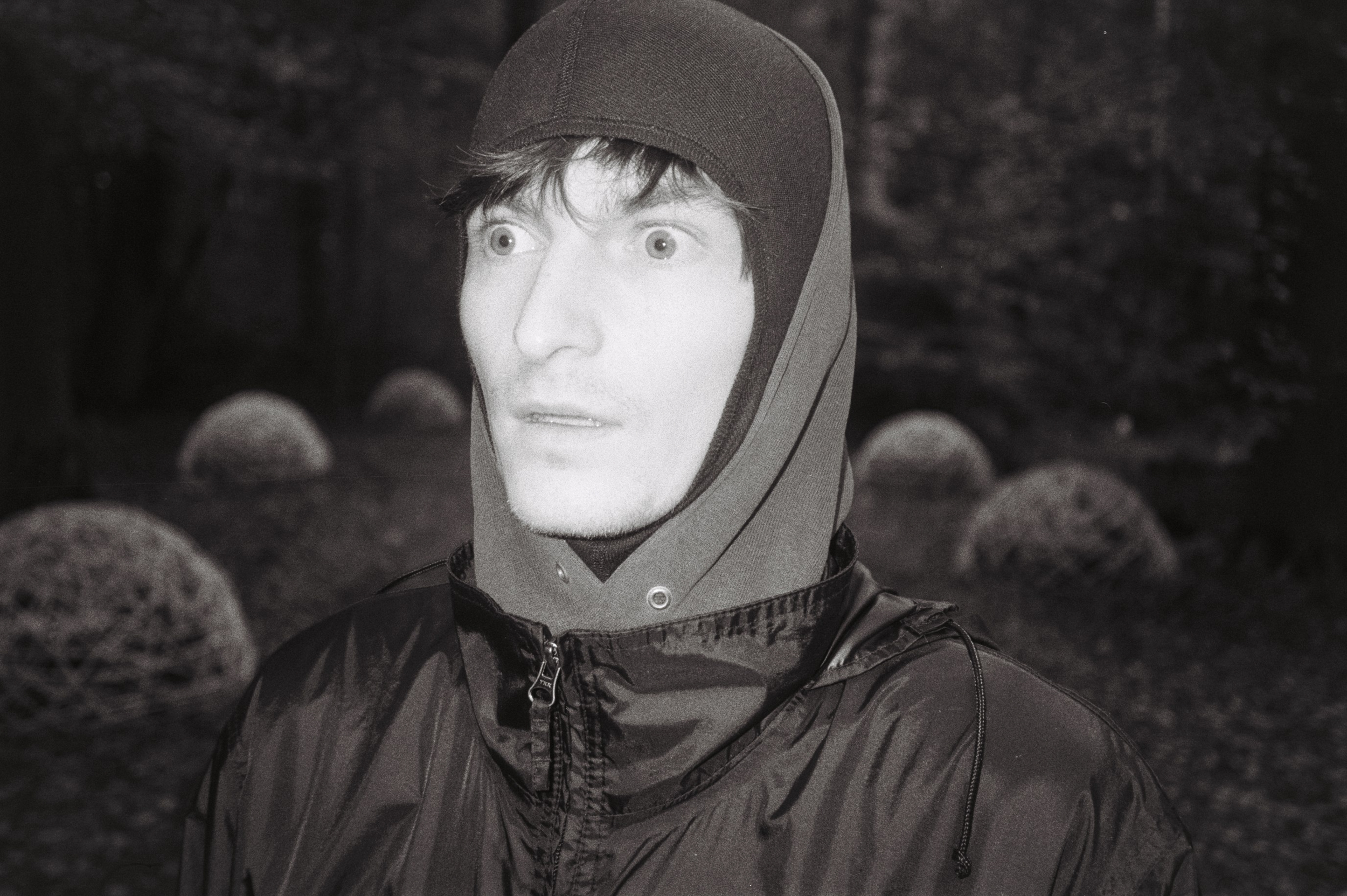Knekelhuis dialogues #5 – Geier aus Stahl
Geier aus Stahl is one of the many artistic guises of Leonard Prochazka. No superfluous elements take away from the core experience of his sound. His latest release ‘Strapazen und Genesung’ was named unmistakably throwback record with influences from the top tier of cold wave electronics, industrial and vintage electro-pop.
Who is Geier aus Stahl, your music stage figure?
Many things were leading to this character that Geier aus Stahl came to be. I always felt drawn to melancholic and dark art and music. There’s a few specific moments that seem to have crystalized this fascination though. Being scared while listening to „M1A1“ by the Gorillaz on my Discman as a kid on a vacation to Canada. Or taking the bus from the austrian countryside to my school in Vienna while it’s still dark outside, blasting Portisheads Dummy record in my headphones, having Beth Gibbons explain to me what it means to be deeply sad. Sharing a wall with my older brother who was worshiping bands like the Nine Inch Nails, Nirvana, Red Hot Chili Peppers and so on might also have contributed its part. My interest in the brokenness of society and its individuals as a motive reached its peak when I later on was exposed to the subversive world of DIY cassette culture through Ober Mannkind. A fabulous being and music collector from Dresden, Germany who I can now call my friend. It was around that time (2015/2016) that I realized the magnitude of certain destructive and heavy energies inside me which I never managed to express and therefore share with anyone. Be it verbally talking to the people around me nor through my art at the time. That’s when the actual personal need for Geier aus Stahl was not longer to be ignored.
You are a multidisciplinary artist. How does working with different forms of art inspire you?
I find it extremely important to sculpt and shape. To touch, feel and make things around me resonate. I’m a heavy overthinker. So to do is to find relieve in overcoming certain mental obstacles. Being flexible when choosing material or media is a strategy I use to keep a relatively steady workflow and interest. In the years of my art and music practice I just realized that that is the only way for me personally to reach points of creative output that excite me. During the pandemic I started to do some letter drawings manifesting different thoughts. Almost like a diary. One of them says: „I have to do in order to think.“ Which seems like the wrong way but thats how it works for me.
Why did you choose to communicate in German?
When I first started working on Geier aus Stahl material I think the language decision had a certain political layer to it. I was so unbelievably fascinated by the fact that the medium of the cassette from the 1980s on suddenly allowed people without any financial means to talk about their reality (Lebensrealitäten) with such honesty and rawness and completely apart from any commercial restrictions. I‘m not sure why but in the beginning a big part of the cassette music I was confronted with was either from Germany, Austria or Switzerland. The people there just realized that this tool of expression brings them way closer to what was promised to them as democracy, than the leading governments which at the time were still filled with plenty of Ex-Nazi politicans. In general the political context that people from those countries were referring to in their music was something I was familair with through my own experience but also through my extensive research on the student revolution in 1968, which immersed from the killing of Benno Ohnesorg in Germany and had an impact on political movements and art that was connected to it all over the world. So choosing to talk in german for me meant to follow this tradition of direct and personal expression. Fact is that in these last years my reality changed. As I live in the Netherlands now and also have a non-german-speaking partner, english is the most present language at the moment. I don‘t want to make this too much of a conscious decision but I can imagine that these changes will have an impact on how I deal with language in my art and music too.
Wow, that’s an interesting story behind it! Is there a political message coded in your music as well?
Definetly! I don’t make music nore art to purely entertain. The project name itself is already politically charged I would say. The Geier (vulture) as a creature surviving on the remains of others and Stahl (steel) as a clumsy reference to industrialism. It’s all a bit ridiculous but to this day I connect to the weird combination of dystopia and clownishness. I guess AG Geige was a big inspiration for me in that sense. Taking things serious but also being able to laugh about myself. My working process is very much based on methods that allow me to slow things down and loose myself. While making music I want to disconnect until I reach a certain state of uncertainty or amnesia. That’s where I have the feeling I become my most honest and vulnerable self as I’m no longer slave to my consciousness. Putting down the weaponary of rivalism (my ego) and rather dive into the discourse of how things relate to eachother. I feel like that is my job as an artist.
How do you think the digitalization of music changed the opportunities of expression these days?
To some degree I think that the era of digital music production and consumption can be seen as an extension of certain positive aspects I mentioned about the technology of the cassette. The means to record, distribute and listen to music became even more accessible and I find that to be a really good development. No one should be declined the possibility to express themselves through music nore the access to listen to it. Just sometimes I feel like we are lacking the tools to do something meaningful out of those possibilities. And the digitalization of music also normalized structures that are mirroring the unsustainable and capitalistic way our society is organized. Mainly supporting repetetive linear identities, quantitiy over quality and the money that is being generated just goes into the pockets of a few. Those are things I strongly stand against. I want to relate to the things I create and consume and the insane amount of information we are confronted with through the digital world doesn’t really help with that. Personally I collect music in digital and in physical form but I realize that my emotional bond just grows stronger if I can listen, look and touch. Sometimes I just take a record out of my shelf to look at it for some time without evening putting it on. On the production side I also had a long phase only investing into hardware gear because I wanted to distance myself from all the distractions that come with a computer. I mainly used it to record what was happening outside the box. Only slowly my creative vision becomes strong enough to fuse my hardware with some interesting software tools (which there are without a doubt) without loosing myself in the possibilities.
What does ‘Strapazen und Genesung’ mean to you?
Rather than following a conceptual idea my debut album „Strapazen und Genesung“ (which can be translated to „strain and recovery“) is a selection of material that I produced over the past four years. As the title of the album already says it is a collection of songs which are either an expression of personal struggles or describing places that made a certain healing process possible. Some of these songs I am performing since 2018. So what made it on the album is what, for me personally, stood the test of time. Which is the ultimate goal for everything I make. Also that year the student revolution in 1968 was dating back exactly 50 years. Many of the questions I am dealing with in my music and visual arts are rooted in the discourse of that time and are just as or even more relevant today. It’s bit of a nerdy idea but as a small tribute to that most of the songs I produced and played live in 2018 are running on 68 beats per minute. („Wohin“, „Unterland“, „Für immer“)
What are your plans for the future?
Listen to what others have to say more than I talk.
Be honest even if it’s scary.
Help if help is needed.
Ask for Help if I need help.
Picture by Marysia Swietlicka.

